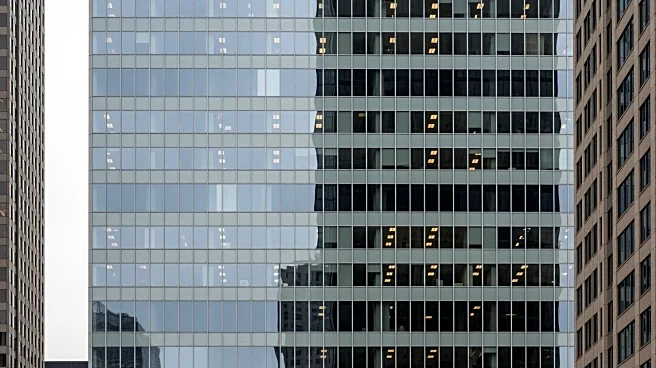What's Happening?
Chicago's downtown office vacancy rate has surged to a record-high 28%, according to recent data. This increase is attributed to evolving work trends post-pandemic, where remote work has become more prevalent,
reducing the demand for office space. Over the past two years, companies have vacated 2.3 million square feet in the business district, nearly double the space vacated during the Great Recession of 2009-2010. Illinois Policy Institute researcher LyLena Estabine highlights the need for city policymakers to adapt to these changes, suggesting that converting commercial spaces to residential units could be a viable solution. This approach has been successfully implemented in New York's Midtown Manhattan.
Why It's Important?
The rising vacancy rates in Chicago's downtown area reflect broader shifts in work culture, with remote work becoming a permanent fixture for many companies. This trend poses challenges for urban centers traditionally reliant on office-based businesses. The high vacancy rates could lead to economic repercussions, affecting local businesses that depend on office workers. Additionally, the situation presents an opportunity for urban revitalization, potentially transforming the downtown area into a more residential and community-focused space. This could address both the vacancy issue and the city's housing crunch, offering a dual benefit to the local economy and residents.
What's Next?
Chicago is considering a central area plan aimed at revitalizing the downtown region and surrounding areas by 2045. This plan may include strategies to convert office spaces into residential units, fostering a more vibrant community environment. As interest rates rise, city lawmakers are urged to act swiftly to mitigate the impact of high vacancy rates. The success of similar initiatives in other cities, like New York, could serve as a model for Chicago's efforts. The plan's implementation is expected to begin within the next few years, potentially reshaping the city's urban landscape.
Beyond the Headlines
The shift from commercial to residential spaces in downtown Chicago could have long-term implications for urban planning and development. It may lead to a reevaluation of how cities are structured, prioritizing mixed-use developments that cater to both living and working needs. This transformation could also influence cultural and social dynamics, fostering a more integrated community where residents live, work, and socialize in the same area. Such changes could redefine the identity of Chicago's downtown, making it a more attractive destination for both residents and visitors.













